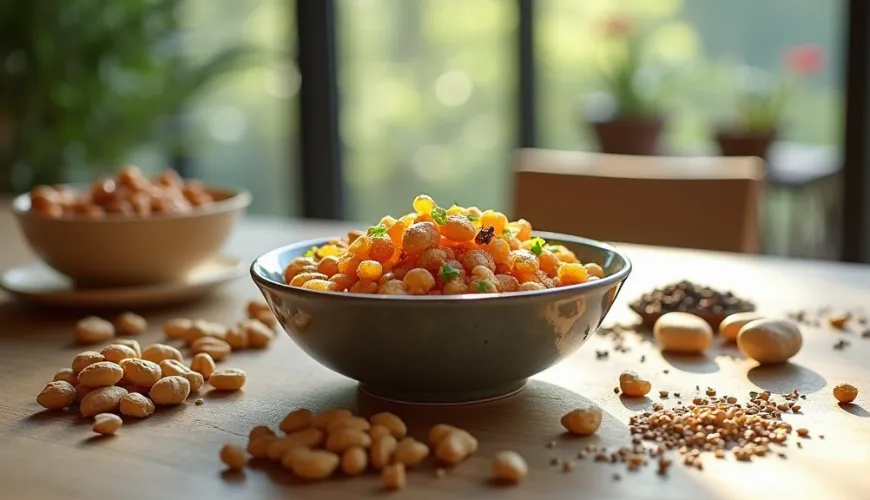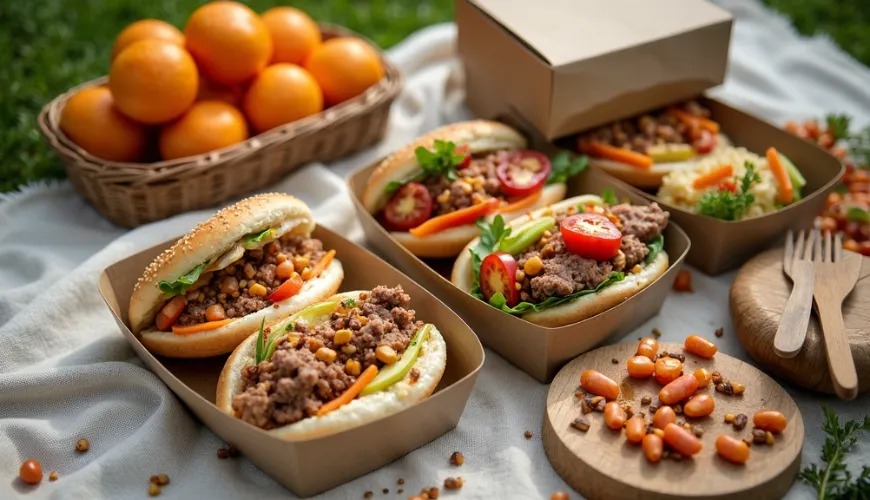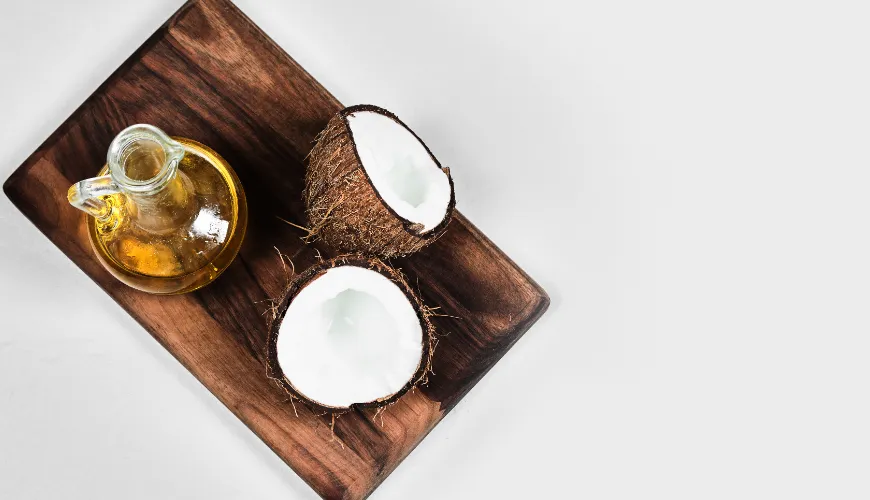
How to Prepare Healthy Bánh Bao at Home and Impress Your Family

Bánh bao - the Vietnamese fluffy delight winning hearts in Czech kitchens
Vietnamese cuisine has established a strong presence in the Czech Republic. Pho, bun bo nam bo, or summer rolls are known by almost everyone today. However, there are still specialities waiting for their moment of fame. One of them is bánh bao – fluffy filled dumplings made from leavened dough, which in Vietnam are a popular breakfast, quick dinner, and street snack. Although they may at first glance resemble Chinese baozi, they carry a distinctly Vietnamese character, adapted to local tastes and ingredients.
Whether you encounter bánh bao with pork (bánh bao xá xíu) or the vegetarian variant bánh bao chay, it is always a combination of tender dough and rich filling that is both tasty and satisfying. In recent years, bánh bao has started appearing at Czech markets and festivals, and many of us enjoy trying to prepare them at home. It's no wonder – this treat is surprisingly versatile, healthier than many other "fast foods," and, with the right recipe, simple to make.
How does a cloud taste? Just like a good bánh bao
At first glance, they look like white cushions someone forgot in a bamboo steamer. But when you take a bite, you'll understand why bánh bao is so popular in Vietnam. The dough is tender, moist, and slightly sweet. The filling, on the other hand, is hearty, umami, and strongly aromatic – typically using sweet-salty pork xá xíu, which with its caramelized tone resembles an Asian version of roasted pork belly. Often, the filling includes eggs, mushrooms, sometimes even Chinese sausage or pickled vegetables.
In recent years, alternative versions, especially meatless ones, have been gaining popularity. Bánh bao chay, the vegetarian (or vegan) bánh bao, is filled with tofu, shiitake mushrooms, carrots, glass noodles, or pickled radish. The result is lighter but definitely not boring. A properly seasoned filling and perfectly fluffy dough are the main stars in this version as well.
One reason bánh bao is increasingly seen in Czech households is their versatility. They can be eaten hot or cold, are easily portable, and stay fresh for several days. They are ideal for traveling, school, work, or as an unconventional treat for guests.
Where they came from, there they were
Although bánh bao has a Vietnamese name, its origins stretch further north. They are a variant of Chinese baozi – filled leavened dumplings enjoyed in China for hundreds of years. However, the Vietnamese adapted the recipe – the dough is usually softer, sometimes slightly sweet, and the fillings differ according to region and religious beliefs. Thanks to the Buddhist tradition, the vegetarian version bánh bao chay was created, prepared especially during religious festivals or new moons.
Interestingly, the word "bánh" in Vietnamese refers to almost anything made from dough – from cakes to noodles. "Bao" means to wrap or cover. So in essence, bánh bao literally means "wrapped cake" – quite fittingly.
Bánh bao recipe - the secret to success is in the dough
Making bánh bao at home isn't as difficult as it may seem. The foundation is a good dough recipe and a tasty filling. There are many recipe variations, but the basic ratio remains similar: plain flour, yeast, a bit of sugar, oil, water or milk, and a pinch of salt.
The dough is allowed to rise, divided into pieces, and filled with prepared filling. The dumplings are then steamed – ideally in a bamboo steamer – for about 15 to 20 minutes. The result is fluffy buns that smell of home and exoticism at the same time.
Here's a simple outline of the basic steps:
- Mix 500 g of plain flour, 7 g of dry yeast, 2 tablespoons of sugar, a pinch of salt, 250 ml of lukewarm water, and 2 tablespoons of vegetable oil. Knead into a smooth dough and let rise for an hour.
- Meanwhile, prepare the filling – typically a mixture of minced meat, onion, garlic, soy sauce, and sugar. For a vegetarian version, try marinated tofu, mushrooms, and glass noodles.
- Divide the dough into balls, roll them out, fill, and seal well.
- Let rise under a cloth for another 15 minutes, then steam for 15–20 minutes.
Tip: If you don't have a steamer, you can use a colander over a pot of boiling water and cover it with a lid.
A story from a Czech kitchen - how bánh bao became a family tradition
A few years ago, a young family from Brno decided to invite their Vietnamese neighbor for Saturday cooking. She brought stories and a recipe for bánh bao with xá xíu meat. After an afternoon of cooking, chopping, and steaming, a batch of twenty fragrant dumplings was created, disappearing that very evening. Since then, making bánh bao has become a family tradition – every month they create their own fillings, test new flavors, and teach the recipe to their children. As Mrs. Lucie says: "It's like making dumplings, but these have a story from the other side of the world."
Healthy fast food? Yes, if you make it at home
If you prepare bánh bao at home, you have control over all the ingredients. You can use organic meat, vegetables from the farmer's market, whole wheat flour, or coconut sugar if you want a healthier version. You can also regulate the amount of salt or fat, omit MSG, and other additives common in store-bought versions.
Moreover, it's a meal that fills you up without weighing you down. It's ideal for children, athletes, and anyone looking for a quick yet wholesome meal. Thanks to steaming, more nutrients are retained compared to frying.
Bánh bao as part of a sustainable kitchen
In a time when more people strive for a more sustainable lifestyle, bánh bao offers an interesting alternative to common snacks wrapped in plastic or overly salty processed foods. You can store them in a reusable box, take them on a picnic or to work, and they keep for 2–3 days when stored properly. They also freeze well – just steam them briefly or heat in the microwave with a little water.
The vegetarian version, bánh bao chay, is also a great way to reduce meat consumption without compromising on taste or nutrition. And when the dough is made from local flour and the filling from homegrown vegetables, it's a meal that's not only delicious but also considerate.
As the famous chef Anthony Bourdain said after visiting Hanoi: "In Vietnamese cuisine, everything is in balance – sweet, salty, sour, and spicy. And it makes you smile." Bánh bao perfectly embodies this sentiment.
Next time you're pondering what quick, healthy, and slightly different meal to prepare, try reaching for a bánh bao recipe. You might fall in love with them just like millions of people across Asia – and now even Europe.

